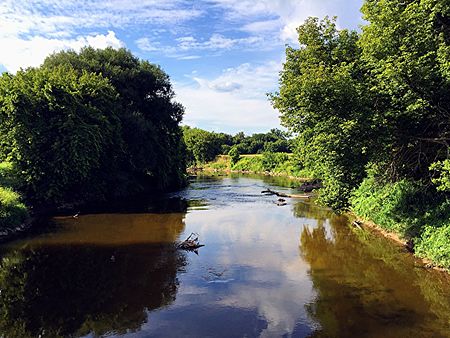Shiawassee River
Rivers of Genesee County, MichiganRivers of Livingston County, MichiganRivers of MichiganRivers of Midland County, MichiganRivers of Oakland County, Michigan ... and 4 more
Rivers of Saginaw County, MichiganRivers of Shiawassee County, MichiganSuperfund sites in MichiganTributaries of Lake Huron

The Shiawassee River ( shy-ə-WAH-see) in the U.S. state of Michigan drains an area of 1,201 square miles (3,110 km2) within Oakland, Genesee, Livingston, Shiawassee, Midland and Saginaw counties. It flows in a generally northerly direction for approximately 110 miles (180 km) from its source to its confluence with the Tittabawassee River creating the Saginaw River, which drains into Saginaw Bay of Lake Huron.The name is derived from the Chippewa "shia-was-see" meaning "the river straight ahead."
Excerpt from the Wikipedia article Shiawassee River (License: CC BY-SA 3.0, Authors, Images).Shiawassee River
Wickes Park Drive, Saginaw
Geographical coordinates (GPS) Address Nearby Places Show on map
Geographical coordinates (GPS)
| Latitude | Longitude |
|---|---|
| N 43.38697 ° | E -83.96608 ° |
Address
Wickes Park Drive
48602 Saginaw
Michigan, United States
Open on Google Maps









